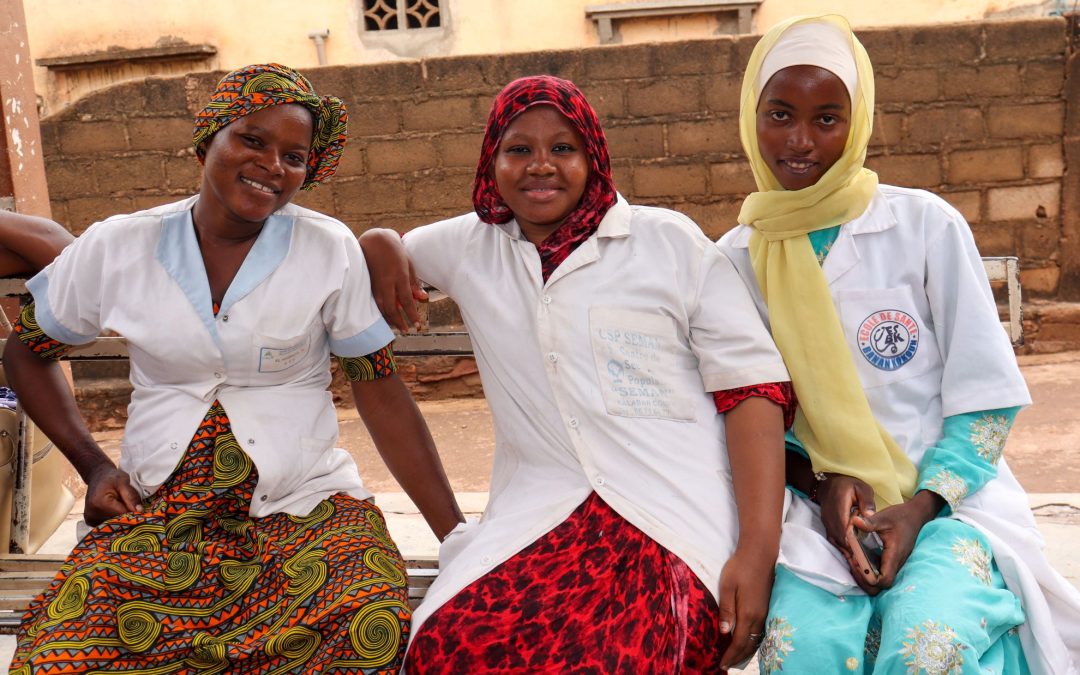
The impact of US foreign aid cuts in Mali
The abrupt shutdown of USAID and US foreign aid is having devastating effects that feel too numerous to count. In the short term, critical programs have ended nearly overnight, and we are all still wrapping our minds around the long-term effects so that we can find a way forward. We will find a way forward.
Below, we simply aim to summarize the impact on us, and that we are seeing on the ground. These firsthand observations come from our team and the partners and communities with whom we work every day.
The impact on Mali Health
We were proud to be a subcontracting partner on the USAID-funded Shifin ni Tagne project. Beginning in 2025, we were going to contribute our local, voice-based app, Kènèya Blon, to the project – helping 20,000 youth access reliable sexual and reproductive health information, connecting them to valuable resources in their language.
While we can adapt to funding losses, the suddenness of this change is what has made adjusting so difficult. There is no chance of this project proceeding without USAID funding, so we are adjusting our budgets, plans, and staffing accordingly. For the first time ever, we are having to lay of staff and reduce staff salaries in order to preserve as much of our program work as possible.
The impact on Mali
While we are figuring out how to weather the direct loss of our project funding, it is the larger context that causes us the most concern. The cessation of US funding to Mali jeopardizes vital projects for vulnerable populations. Its consequences deeply affect social sectors, including education, agriculture, health and food security.
The health system was heavily dependent on US foreign aid funding and its interruption will impact access to primary healthcare for millions of Malians. Thousands of community health workers were paid directly by foreign aid. Health programs at all levels relied on aid funding – like maternal and child health and gender-based violence prevention. Programs to combat malnutrition, to prevent, control, and treat malaria, and to prevent and treat HIV/AIDS have been profoundly affected.
In addition to health program delivery, the US was one of the largest funders of health commodities, including vaccines, contraceptives, and ready-to-use therapeutic foods.
Our partner community health centers (CSComs), the first contact communities have with the health system, are on the front lines of these abrupt and severe changes. They shared updates with our team on how they are managing, and the implications these changes are having on access to vital health services their communities, particularly for women and children. Below are some of the most alarming impacts:
- Malnutrition: A disruption of contracts for ready-to-use therapeutic foods (RUTF) used to treat severe acute malnutrition (like Plumpy’Nut) means that CSComs are experiencing shortages. In response, they are rationing the doses for these extremely vulnerable young patients from their typical 3 sachets per day to 1 sachet. Despite being a peanut producer, there are no facilities in Mali that can produce RUTF, so it remains dependent on these aid contracts. We are working with partners to develop local alternatives to prevent and treat malnutition so that cases do not escalate to the stage at which RUTF is needed, but malnutrition in Mali continues to increase.
- Vaccination: There has been a drastic reduction in vaccine doses being given to the CSComs, which are responsible for timely vaccination of children. Vaccination doses are being missed due to these shortages, especially BCG, but our partners report a shortage of all vaccines. Vaccine mobilization campaigns and community awareness raising activities are at a standstill because there are not sufficient doses.
- Prenatal Care: Due to a shortage of supplies, women are no longer receiving standard services during their prenatal visits, including HIV testing for the prevention of mother-to-child transmission of HIV (PMTCT) because the testing reagent is not available. There is also a shortage of bed nets, which increases the already high risk of malaria for pregnant women, newborns, and children under 5 years of age.
- Family Planning: Family planning supplies have almost completely run out. These products are very expensive at private pharmacies and are out of reach for most families. Lack of access to contraceptives and other supplies will lead to increases in STIs, STDs, and unwanted pregnancies.
As always, Mali Health remains committed to supporting the community health system and local actors to improve access to quality maternal and child healthcare. While we have weathered many emergencies (multiple coups d’etat, epidemics, pandemics, climate change) none have so profoundly destablized the health system as this one.
This emergency was manmade. Direct support to those on the frontlines, to those whose health systems have been dismantled, to those delivering and receiving healthcare each day – is how we will rebuild just and equitable systems and structures to ensure that pregnant women and children have the care they need and deserve, without dependence on foreign aid. Please if you can, contribute today.






